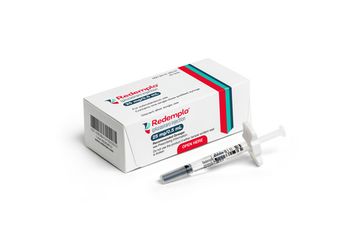
VTE complications reduced with perioperative statin therapy
When used in conjunction with conventional blood clot prevention therapies, statins significantly reduced the risk for venous thromboembolic (VTE) events following total joint replacement (TJR) surgery, according to research presented recently at the 2014 Annual Meeting of the American Academy of Orthopaedic Surgeons (AAOS).
When used in conjunction with conventional blood clot prevention therapies, statins significantly reduced the risk for venous thromboembolic (VTE) events following total joint replacement (TJR) surgery, according to research presented recently at the 2014 Annual Meeting of the
The research found that the number of total hip and total knee replacement surgeries continues to rise each year (more than 1 million were performed in 2011). VTE is the most frequent serious complication following orthopedic surgery. VTE can increase hospital costs and sometimes extend hospital length of stay. Rarely it can result in death.
Current, standard VTE prevention techniques include using an elastic stocking and/or other external compression device upon being admitted to the hospital, patient movement and rehabilitation beginning the first day after surgery and continuing for several months, and anticoagulant therapy starting the night before surgery and continuing after the patient is discharged.
Philadelphia-based orthopedic surgeon and lead study author Katharine T. Criner, MD, and colleagues reviewed the outcomes of 546 total hip and knee replacement patients with a minimum of 11 months postoperative follow-up. All patients received the standard VTE postoperative therapy, based on AAOS guidelines. Patients who received a revision joint replacement surgery, a TJR following a fracture, patients with a history of blood clots, or patients taking hormone replacement therapy were excluded from the study. The average patient was aged 65.5 years and 61% of patients were obese with a body mass index (BMI) of 33 kg/m². Patients were divided into two groups: 196 patients who took statins before and after surgery and 221 patients who did not take statins.
“Our study found that the patients on perioperative statins had a significantly lower amount of VTE events in the postoperative period of total knee and total hip replacements when compared to the control group. The statin group had 7.7% VTE and the control group had 14.5% VTE,” said Dr Criner.
“Statins not only have lipid-lowering effects, but pleiotropic anti-inflammatory effects that may account for their ability to decrease the incidence of VTE,” Dr Criner said. “The purpose of our study was to examine whether statins, in additional to conventional VTE prophylactic interventions, have a protective effect on VTE in the postoperative period.
“Statins in addition to conventional prophylactic therapy-compression stockings, mechanical compressive devices, and Coumadin or Lovenox- significantly reduced the risk of VTE by 48% in the postoperative period for patients undergoing elective total knee and hip replacements,” she continued.
Dr Criner said that this study sets the ground work for a future prospective, randomized, placebo-controlled study to further investigate the role of statins on VTE in this patient population. “Clinical practice should not be changed before we further investigate with this type of clinical trial,” she advised.
Newsletter
Get the latest industry news, event updates, and more from Managed healthcare Executive.

















































